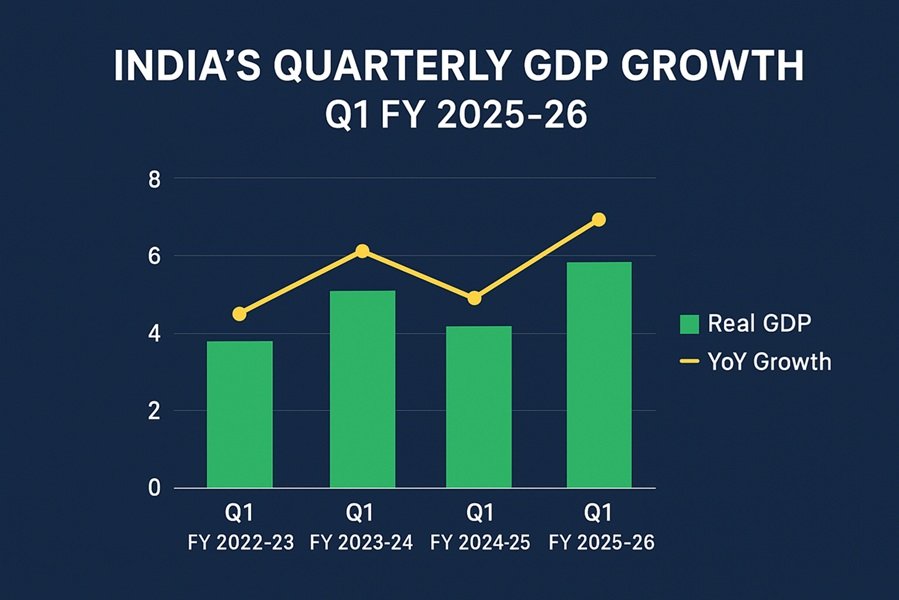
When you sell a long-term capital asset like stocks or shares, the profit earned is classified as Long-Term Capital Gains (LTCG). This financial gain comes with its own unique tax implications, especially when the Securities Transaction Tax (STT) is paid. In this article, we’ll dive deep into the taxation of LTCG on listed stocks and shares, unpack the latest Budget 2025 updates, and explore the nuances of Section 112A of the Income Tax Act. Whether you’re a seasoned investor or just starting out, this guide will equip you with the knowledge to navigate the tax landscape effectively.
Budget 2025: What’s New for LTCG?
The 2025 Budget introduces fresh proposals that could reshape how LTCG is taxed:
- Unit-Linked Insurance Plans (ULIPs):
- ULIPs with premiums exceeding 10% of the policy’s sum assured, or those with annual premiums above Rs. 2.5 lakh, are now proposed to fall under LTCG taxation rules. This broadens the scope of taxable assets beyond traditional securities.
- Amendment to Section 2(14):
- Securities held by investment funds under Section 115UB will now explicitly be classified as capital assets. This clarification ensures a consistent tax treatment for such holdings.
These updates signal a shift toward tighter tax oversight, making it essential for investors to stay ahead of the curve.
Section 112A: The Cornerstone of LTCG Taxation
Introduced in Budget 2018 after the removal of the Section 10(38) exemption, Section 112A governs the taxation of LTCG on listed equity shares, equity-oriented mutual funds, and units of business trusts. Effective from the financial year 2018-19 (assessment year 2019-20), it applies a concessional tax rate to these gains, provided certain conditions are met.
Key Features of Section 112A:
- Tax Rate:
- 10% on gains exceeding Rs. 1 lakh (effective from FY 2018-19).
- Increased to 12.5% from July 23, 2024, with the exemption threshold raised to Rs. 1.25 lakh from FY 2024-25.
- Reporting Requirement:
- Taxpayers must provide scrip-wise details of securities sold during the year in their income tax return, as outlined in the Section 112A schedule.
Conditions for Concessional Rate:
- STT must be paid on both the acquisition and transfer of equity shares.
- For equity-oriented fund units or business trust units, STT must be paid upon sale.
- The asset must qualify as a long-term capital asset (held for over 12 months).
- No deductions under Chapter VI-A (e.g., Section 80C) can be claimed against LTCG.
- Rebate under Section 87A is not applicable to tax on LTCG under Section 112A.
Applicability:
This section kicks in for transfers after April 1, 2018, taxing gains above the exemption limit at the specified rate. With the recent hike to 12.5% and an increased threshold of Rs. 1.25 lakh, planning your investments early is more crucial than ever.
Pro Tip: Use a tax calculator updated with Budget 2025 changes to estimate your liability in minutes and optimize your savings for the next year.
Grandfathering Provisions: Protecting Pre-2018 Investments
Budget 2018 introduced a “grandfathering” mechanism to shield investors from the abrupt tax shift for investments made on or before January 31, 2018. But what does grandfathering mean?
The Concept of Grandfathering:
When a new rule is introduced, certain individuals or entities may be exempt from complying with it if they operated under the old regime. In the context of LTCG, grandfathering ensures that gains accrued up to January 31, 2018, remain untaxed, offering a fair transition for early investors.
How It Works:
The Cost of Acquisition (COA) for grandfathered investments is calculated as the higher of:
- The actual COA, or
- The lower of:
- Fair Market Value (FMV) as of January 31, 2018, or
- The sale price.
FMV Definition:
- For listed securities, it’s the highest price quoted on a recognized stock exchange on January 31, 2018.
- If no trading occurred that day, the highest price from the nearest preceding trading day applies.
Formula:
Capital Gain/Loss = Sale Price – Revised COA (as determined above).
Real-World Examples of LTCG Calculation
Let’s break this down with some unique scenarios to illustrate how grandfathering and Section 112A play out:
Example 1: Steady Growth
- Purchase: Dec 15, 2016, for Rs. 10,000
- FMV (Jan 31, 2018): Rs. 12,000
- Sale: May 10, 2020, for Rs. 15,000
- COA: Higher of Rs. 10,000 (actual) or Rs. 12,000 (lower of FMV and sale price) = Rs. 12,000
- Capital Gain: Rs. 15,000 – Rs. 12,000 = Rs. 3,000
Example 2: Post-FMV Surge
- Purchase: Jan 20, 2018, for Rs. 16,000
- FMV (Jan 31, 2018): Rs. 11,000
- Sale: Apr 26, 2022, for Rs. 26,000
- COA: Higher of Rs. 16,000 (actual) or Rs. 11,000 (lower of FMV and sale price) = Rs. 16,000
- Capital Gain: Rs. 26,000 – Rs. 16,000 = Rs. 10,000
Example 3: Market Dip
- Purchase: Nov 11, 2016, for Rs. 19,500
- FMV (Jan 31, 2018): Rs. 12,000
- Sale: May 21, 2018, for Rs. 9,000
- COA: Higher of Rs. 19,500 (actual) or Rs. 9,000 (lower of FMV and sale price) = Rs. 19,500
- Capital Loss: Rs. 9,000 – Rs. 19,500 = Rs. (10,500)
Example 4: Sharp Decline
- Purchase: Oct 23, 2016, for Rs. 14,500
- FMV (Jan 31, 2018): Rs. 18,000
- Sale: May 18, 2018, for Rs. 7,000
- COA: Higher of Rs. 14,500 (actual) or Rs. 7,000 (lower of FMV and sale price) = Rs. 14,500
- Capital Loss: Rs. 7,000 – Rs. 14,500 = Rs. (7,500)
Example 5: Break-Even Scenario
- Purchase: Nov 13, 2010, for Rs. 12,000
- FMV (Jan 31, 2018): Rs. 30,000
- Sale: May 11, 2019, for Rs. 25,000
- COA: Higher of Rs. 12,000 (actual) or Rs. 25,000 (lower of FMV and sale price) = Rs. 25,000
- Capital Gain: Rs. 25,000 – Rs. 25,000 = Nil
These examples highlight how the grandfathering rule can either reduce taxable gains or lock in losses, depending on market movements.
LTCG Scenarios: Timing Matters
Here’s a quick snapshot of how purchase and sale dates affect tax liability:
| Scenario | Tax Implication |
|---|---|
| Bought and sold before Jan 31, 2018 | Exempt under Section 10(38). |
| Bought before Jan 31, 2018; sold between Jan 31 and Apr 1, 2018 | Exempt under Section 10(38). |
| Bought before Jan 31, 2018; sold on or after Apr 1, 2018 | LTCG taxable, but gains up to Jan 31, 2018, are grandfathered. |
| Bought after Jan 31, 2018; sold on or after Apr 1, 2018 | LTCG taxable (Sale Price – Actual COA). |
Note: Assumes all gains are long-term (held > 12 months).
Bonus and Rights Shares: Special Considerations
For bonus or rights shares acquired on or before January 31, 2018, the FMV on that date serves as the COA. This exempts gains accrued up to that point. For example:
- You bought Reliance shares on April 1, 2016, and received bonus shares on April 1, 2017. If sold after January 31, 2018, the FMV as of January 31, 2018, becomes the COA for the bonus shares.
Carrying Forward Losses
- Short-Term Capital Loss (STCL): Can be offset against both short-term and long-term capital gains.
- Long-Term Capital Loss (LTCL): Can only be offset against long-term capital gains.
- Losses from listed equity shares (taxed at 12.5% under Section 112A) can now be carried forward to offset future LTCG, offering a silver lining for investors facing market downturns.
Final Thoughts: A Balancing Act
The introduction of LTCG tax alongside the existing STT has sparked debate. Is it a fair move, or an added burden on investors? The government likely aims to bolster revenue amid GST shortfalls, but the dual levy raises questions about its long-term impact. For now, proactive planning—using tools like tax calculators and reconciling your capital gains with the Annual Information Statement (AIS)—is your best bet to stay compliant and minimize surprises.







